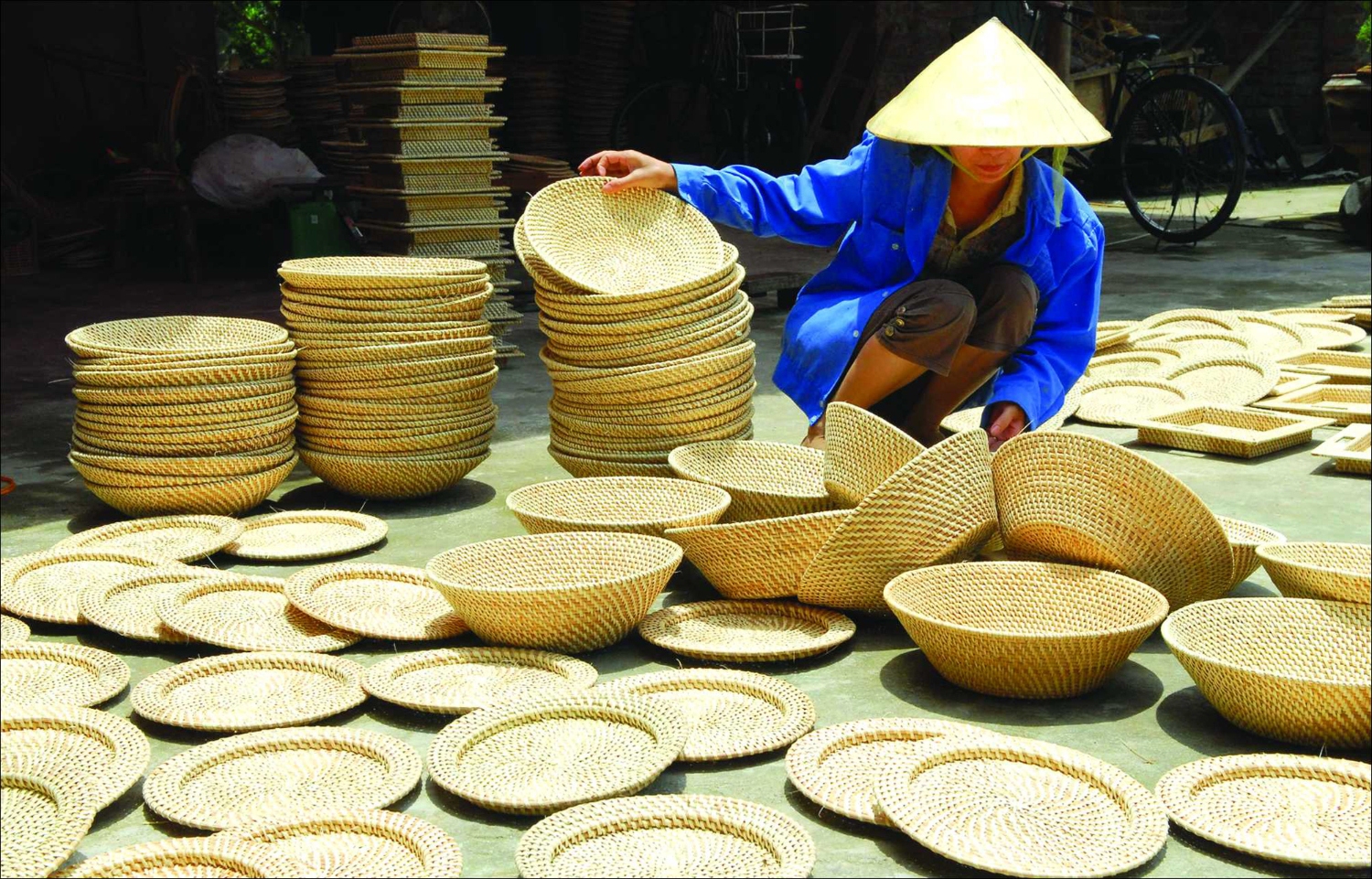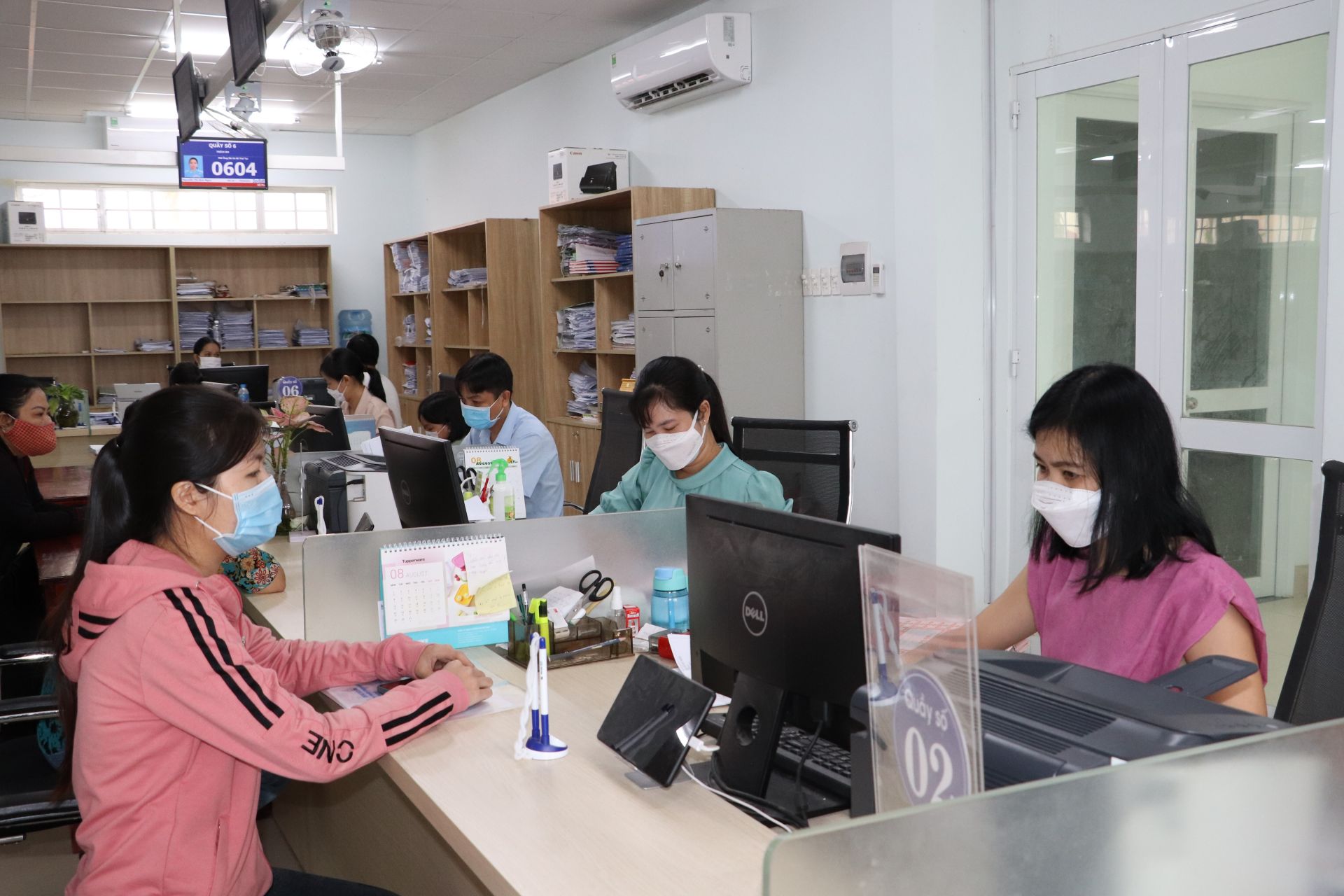Orientation for rural industry development until 2030, vision to 2045 in Vietnam
What is the orientation for rural industry development until 2030, with a vision to 2045? – Ngoc Thinh (Kien Giang)

Orientation for rural industry development until 2030, vision to 2045 in Vietnam (Internet image)
Regarding this issue, LawNet would like to answer as follows:
On September 14, 2023, the Prime Minister of Vietnam issued Decision 1058/QD-TTg approving the Rural Industry Development Strategy until 2030, with a vision to 2045.
Orientation for rural industry development until 2030, vision to 2045 in Vietnam
Specifically, the Prime Minister has set out the orientations for rural industry development until 2030, with a vision to 2045 as follows:
(1) Development orientation according to rural occupation groups
- Group processing and preserving agricultural, forestry, and aquatic products
+ Increase the rate of use of machinery and equipment and apply technical advances and modern, environmentally friendly technology to production. Combining traditional and modern production methods to preserve and promote typical regional and local products.
+ Improve chain production processes, ensure nutrition and food hygiene and safety, improve product quality to increase competitiveness, expand domestic product consumption markets, and aim for export.
- Handicraft production group
+ Create new product designs that suit the tastes of domestic and export consumers; develop production in the direction of making gifts and souvenirs to serve tourists.
+ Strengthen links between handicraft villages and combine raw materials to create new, unique, artistic, and highly usable products.
+ Research and encourage the use of new materials with clear origins that are environmentally friendly to replace traditional materials that are gradually becoming scarce.
+ Create conditions to support artisans, skilled workers, and workers to participate in courses on design, shaping, color coordination, and material coordination in the production of handicraft products.
- Group handling and processing of raw materials to serve rural production
+ Improve the capacity of processing and processing facilities to create new types of raw materials, consistent with the development trend of rural industries, especially the production of recycled materials, which are environmentally friendly and replace imported materials.
+ Form large-scale, concentrated raw material areas with sustainable certification associated with primary processing, processing, and production factories for rural craft products, reducing dependence on imported raw materials.
+ Form points for preliminary processing and processing of raw materials to supply rural production and business establishments.
- Group producing wooden furniture, rattan, ceramics, glass, textiles, yarn, embroidery, wicker, and small mechanics
+ Focus on producing potential and highly commercial products to meet domestic and export needs.
+ Combine different raw materials, creating new products with a variety of designs, styles, and sizes.
- Group of producers and traders of ornamental creatures
+ Form areas specializing in the production and trading of ornamental creatures, aiming to form a green economic sector.
+ Diverse new and unique products suitable to the culture and needs of the people.
+ Form ornamental animal associations, creating a playground for artisans and players to share experiences and coordinate production and business.
+ Research, breed, cross-breed, design, and manufacture unique products while still retaining the traditional culture of the Vietnamese people.
- Salt production group
+ Support investment in developing salt production in localities with favorable natural conditions, forming concentrated, large-scale salt production areas associated with the processing and recovery of post-salt products.
+ Preserve and develop manual salt production and processing methods; preserve traditional values; and enhance the value of salt grains.
+ Link food processing, healthcare, chemical industry, and marine exploitation industries; Build clean and beautiful salt field models associated with craft village tourism and eco-tourism.
+ Develop cooperative groups, cooperatives, and salt-making villages in the direction of value chain linkage; diversify salt products; meet domestic demand; and aim for export.
- Service group serving production and rural population life
+ Form cooperatives, cooperative groups, and individuals to provide services for the production and business of people in rural areas.
+ Diversify types and expand the scale of services serving production and life in rural areas; restructuring from agricultural production to providing all kinds of services, meeting the entertainment needs of people in rural areas.
(2) Orientation for preserving and developing craft villages
+ Focus on preserving and restoring traditional occupations and craft villages that are at risk of oblivion and loss associated with tourism; build distribution channels and introduce craft village products; confer, honor, and develop the team of artisans, skilled workers, and workers in craft villages and traditional craft villages.
+ Prioritize the establishment of professional associations and unions in localities, innovation centers, businesses, and vocational training establishments; support model design, product improvement, and market information to serve the preservation and development of professions and craft villages.
(3) Product consumption market
- For the domestic market: connect product consumption with large cities; diversify types of services to meet increasing demand; build rural tourism and craft village tourism programs to export rural craft products on the spot.
- For export markets: diversify export products into traditional markets such as China, America, Europe, Japan, Korea, etc.; expand into potential markets in the Middle East, Latin America, and Africa.
- Periodically organize events on a regional, national, and international scale to advertise and promote trade and exchange experiences on developing rural industry products.
(4) Environmental protection associated with the development of agricultural, rural, and craft village tourism
- Urgently relocate polluting production facilities in residential areas to industrial clusters and concentrated production zones. Preserve the rural landscape associated with smart, ecological villages, ensuring it is green, clean, beautiful, and environmentally friendly.
- Effectively deploy the program to develop rural tourism and craft village tourism in building new rural areas; focus on attracting investment and improving facilities; diversify and improve the quality of tourism products; promote traditional rural cultural values; and engage in diverse activities to experience craft village tourism and rural tourism.
More details can be found in Decision 1058/QD-TTg, taking effect from the date of signing.
- Key word:
- rural industry
- in Vietnam
- Number of deputy directors of departments in Vietnam in accordance with Decree 45/2025/ND-CP
- Cases ineligible for pardon in Vietnam in 2025
- Decree 50/2025 amending Decree 151/2017 on the management of public assets in Vietnam
- Circular 07/2025 amending Circular 02/2022 on the Law on Environmental Protection in Vietnam
- Adjustment to the organizational structure of the Ministry of Health of Vietnam: Certain agencies are no longer listed in the organizational structure
- Vietnam aims to welcome 22-23 million international tourists in Vietnam in 2025
-

- Emergency response and search and rescue organizations ...
- 10:29, 11/09/2024
-

- Handling of the acceptance results of ministerial ...
- 09:30, 11/09/2024
-

- Guidance on unexploded ordnance investigation ...
- 18:30, 09/09/2024
-

- Sources of the National database on construction ...
- 16:37, 09/09/2024
-

- General regulations on the implementation of administrative ...
- 11:30, 09/09/2024
-

- Notable new policies of Vietnam effective as of ...
- 16:26, 11/04/2025
-
.Medium.png)
- Notable documents of Vietnam in the previous week ...
- 16:21, 11/04/2025
-
.Medium.png)
- Notable documents of Vietnam in the previous week ...
- 16:11, 02/04/2025
-
.Medium.png)
- Notable new policies of Vietnam to be effective ...
- 16:04, 02/04/2025
-
.Medium.png)
- Notable new policies of Vietnam effective from ...
- 14:51, 21/03/2025
 (1).png)
 Article table of contents
Article table of contents
